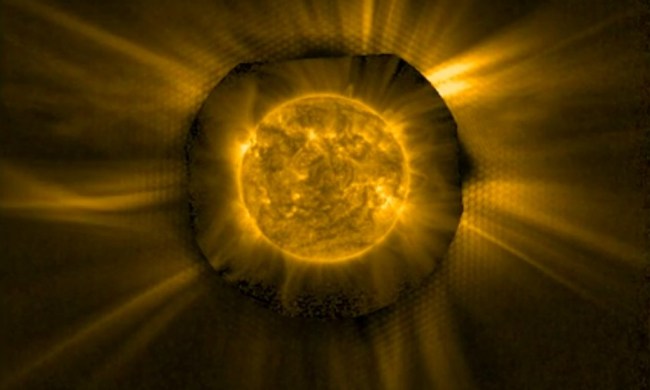The European Space Agency’s Solar Orbiter is on a mission to study the sun, but to get there it has to perform a series of flybys of other planets including Earth. This week, the Orbiter will perform its riskiest flyby, dipping through the smattering of space debris that surrounds Earth before whipping away toward the sun.
Solar Orbiter will reach its closest point to Earth on Saturday, November 27 at 6:30 a.m. ET (3:30 a.m. PT), when it will be within 286 miles of the planet’s surface over North Africa and the Canary Islands. That’s only a little above the orbit of the International Space Station, demonstrating just how close the spacecraft will come to us, and it will have to pass through two rings of space debris in both geostationary orbit and low-Earth orbit.

The close pass is necessary to slow the craft down enough that it can be lined up for a close pass of the sun, where it will be observing phenomena like the recently discovered “campfires” seen on the sun’s surface. To do that, it has to get close, and its next pass of the sun in March 2022 will take it within 30 million miles of the star.
Although the flyby of Earth is risky due to the potential of collision with a piece of space debris, it also offers an opportunity to do some bonus science. Solar Orbiter will be studying Earth’s magnetic field and the way it interacts with the solar wind, which is the stream of particles given off by the sun. The Orbiter will get a look at this phenomenon and see how its data compares to that gathered by other spacecraft like ESA’s Cluster and Swarm missions.
“This flyby is exciting: seeing what Solar Orbiter sees in our part of space, and how that compares to what we are seeing, and if there are surprises, what are they?” said Anja Strømme, Swarm Mission Manager.
As Solar Orbiter performs its risky flyby of Earth, it may even be possible to spot it from the ground. “In the moments leading up to closest approach, skywatchers in the Canaries and North Africa could catch a brief glimpse of the spacecraft speeding through the sky,” ESA advises. “It will be traveling at about 0.3 degrees per second, which is just over half the apparent diameter of the Moon every second. For most observers, it will be too faint to spot with the unaided eye, and too fast for telescopes to track, so binoculars should provide the best chance of catching a glimpse.”



